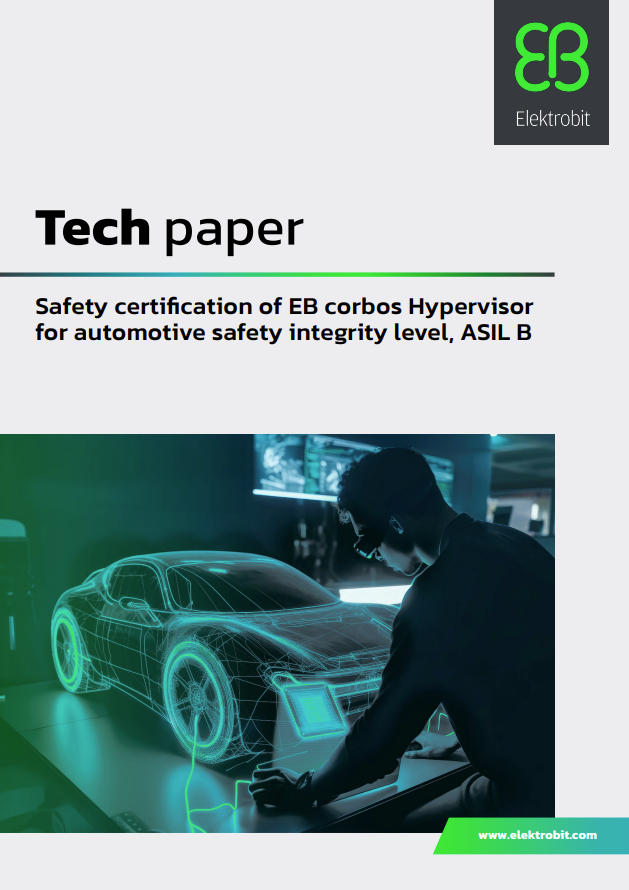
Table of contents
- Functional safety
- Safety standards
- Operating systems, EB corbos Hypervisor
- Challenges to certify EB corbos Hypervisor for automotive safety integrity level, ASIL B
- Concept approval by TÜV SÜD
- Final safety delivery to TÜV SÜD
- Future Safety Plans
Introduction
As automotive software platforms increasingly integrate open-source components, the process of qualifying these components for Automotive Safety Integrity Level (ASIL-B) becomes critical and complex. This technical paper delves into the challenges faced during the ASIL-B qualification process, using the EB corbos Hypervisor as a case study to highlight key obstacles and the lessons learned along the way. The paper explores essential technical issues such as qualifying legacy Quality Management (QM) components, managing compiler and UART reliability, conducting thorough coverage analysis, and ensuring compliance with safety standards through the selection of appropriate tools and methodologies. Additionally, it addresses the qualification of third-party libraries, the application of static code analysis tools, and hardware testing, all in accordance with TÜV SÜD certification requirements. By sharing real-world insights into these challenges, this paper provides valuable guidance for those seeking to navigate the stringent requirements of ASIL-B certification for open-source software.
Resource type
Tech paper
Click on the button to load the content from Pardot.


